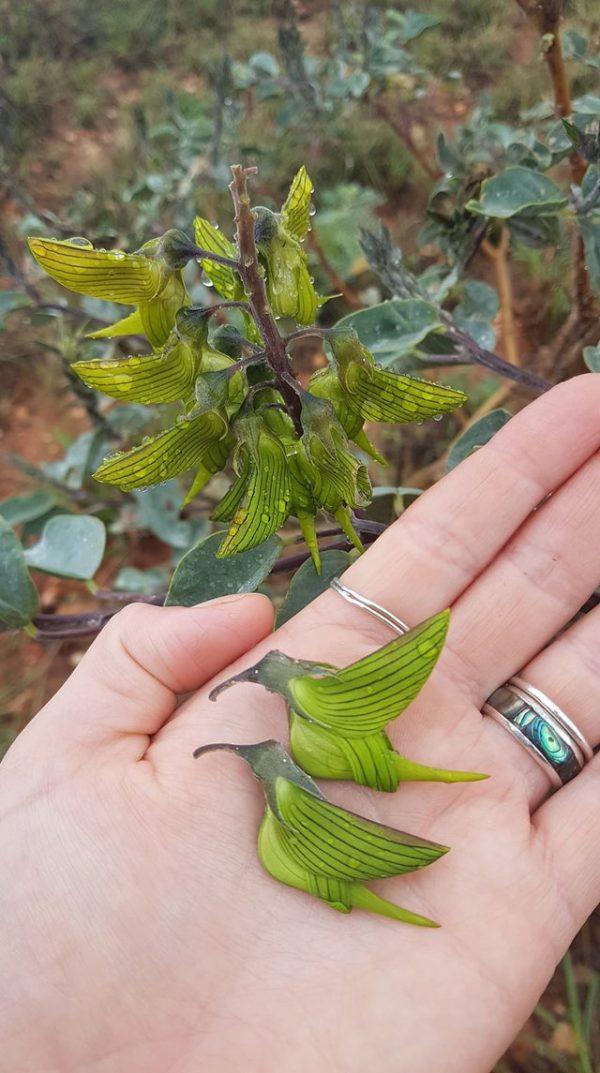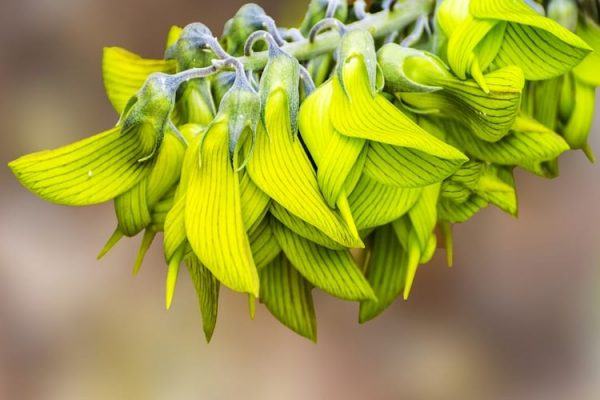A photo of an unusual looking plant was just shared on the social media site Reddit, and it has immediately gone viral and left internet users everywhere stunned.
The photo shows a plant in someone’s hand that looks exactly like an origami hummingbird. Since the image surfaced, people have been wondering where it is from and how the plant came to be shaped like that.

It has since been revealed that the plant is a green flowerbird, or regal flowerbird, with it’s scientific name being Crotalaria cunninghamii. The plant is part of the legume family with chickpeas and alfalfa, and it is native to the inland part of northern Australia. If you find yourself in that part of the world, you can typically find the green flower bird amongst the sand dunes.
Ironically, there are no hummingbirds in this area, so the green flowerbird is making up for it’s absence in a big way!
“The fact that the flower looks like a bird to humans cannot have evolved adaptively because as a signal receiver, there is nothing humans could have done to increase the fitness of individuals that evolved this signal (to look like a bird),” said the scientist user who posted the photo. “Unless indigenous Australians in arid Australia bred or traded the plant because it looks like a bird.”

Green flowerbirds aren’t just pleasing to the eye, as they also have healing properties that have made them a useful resources that indigenous Australians have coveted for generations. The Aboriginal people have long been using it medicinally in eyewash to treat infections.
As for the green flowerbird’s shape, that’s actually a common anatomical trait of legumes. Most legumes are Papilionaceous flowers, which are characterized by irregular clusters of five petals and a larger upper petal known as a banner.
COMMENTS POLICY: We have no tolerance for messages of violence, racism, vulgarity, obscenity or other such discourteous behavior. Thank you for contributing to a respectful and useful online dialogue.